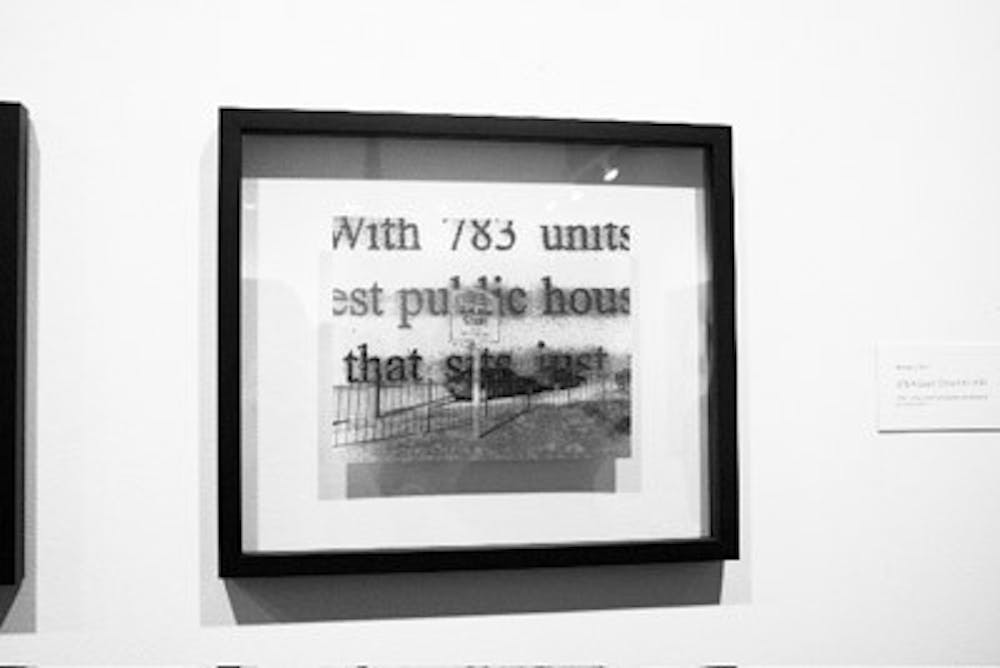When studio art student Kimberly Wirt, a Richmond native, was looking for inspiration for her senior thesis project, she turned to her hometown.
Wirt, who presented her thesis project last spring, said before she had even begun to think about her thesis she had been interested in learning more about the city of Richmond. She received a fellowship from the Center for Civic Engagement that allowed her to research 20th century artists who focused on socio-cultural issues in American cities. She then compared her research on other cities to her research on Richmond in both the past and the present. Art history professor Elena Calvillo served as Wirt's advisor for the original research project, and Wirt said Calvillo had been the main influence for a lot of her initial interests and research.
In the course of completing the research project, titled "Art and the Community: Identifying the City of Richmond," Wirt said she had learned about social injustices in the city.
"For my research, I learned about the specific social injustices that minorities have faced in Richmond -- something I surprisingly never learned in Henrico County Schools," Wirt said.
Wirt so enjoyed her research, she said, that she decided to extend her newfound interest in social injustice in Richmond into her senior thesis for studio art.
"Incidentally," she said, "it was about this time that city officials released the 'Downtown Master Plan,' which planned for even more construction and demolition in minority areas."
Wirt worked on her thesis project, titled "The Downtown Plan: Gentrification of the City of Richmond," for two semesters because she decided to complete an Honors thesis during the spring. For the first semester, Wirt worked on perfecting her ideas and research and developing a clear focus for her project. During the second semester, she worked with other students who were completing studio art theses to plan a group exhibition.
Wirt and the other students had regular critiques with most faculty members from the Art and Art History departments, she said.
"It gave us a lot of feedback and a lot of times, steered us in completely opposite directions in order to perfect our work," she said.
In addition to the critiques with faculty members, Wirt was specifically advised by studio art professor Tanja Softic during the first semester of her work. Wirt described Softic as "a major influence" in her life. During the second semester Wirt spent working on her thesis, she was advised by Richard Waller, executive director of university museums.
Enjoy what you're reading?
Signup for our newsletter
"He's really good with museum studies and gave us an insight into the museum side of things, which is very helpful for artists and not necessarily something that all art majors graduate knowing," Wirt said of Waller.
In addition to planning, critiques and meetings with her advisors, Wirt said she had spent hours each day working on the project itself.
To complete the project, Wirt manipulated digital photos she had taken during her CCE fellowship and during the first semester she spent working on her thesis.
During her CCE fellowship, she said, she had become partial to Mylar, a synthetic material used in printmaking, and during the fall semester she spent preparing for her project, she said she had spent a lot of time learning to use it.
"My thesis derived almost entirely from experimentation," she said.
Wirt used digital and physical layering techniques in order to portray layers of the city's transition, she said.
The finished artwork was arranged in several series. One series, entitled "Gilpin Court," was displayed at Artspace Gallery, which is located downtown, and a second, "Eminent Domain," was shown on campus.
Wirt said she had hoped her project would raise awareness of the social injustices she saw in the city of Richmond, especially those that were caused by construction projects.
"There's so much construction going on in the city and, though some of it is for good, it's really sad to see lower-class and minority communities be invaded with unaffordable condominiums," Wirt said. "Essentially, I wanted my works to increase community awareness of gentrification in Richmond, and to expose the different layers of socio-cultural concerns in the area.
"I knew that my project would not single-handedly change anything, but I wanted to establish grounds for intellectual, intercultural dialogue between residents of the city of Richmond, regardless of race or social status."
Contact staff reporter Emily Baltz at emily.baltz@richmond.edu
Support independent student media
You can make a tax-deductible donation by clicking the button below, which takes you to our secure PayPal account. The page is set up to receive contributions in whatever amount you designate. We look forward to using the money we raise to further our mission of providing honest and accurate information to students, faculty, staff, alumni and others in the general public.
Donate Now



